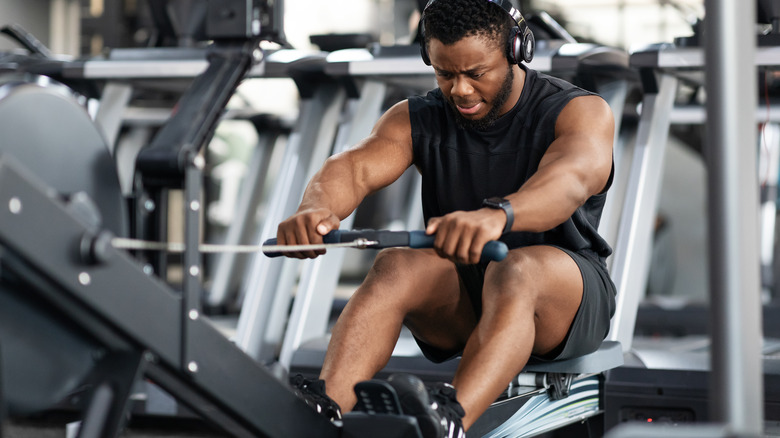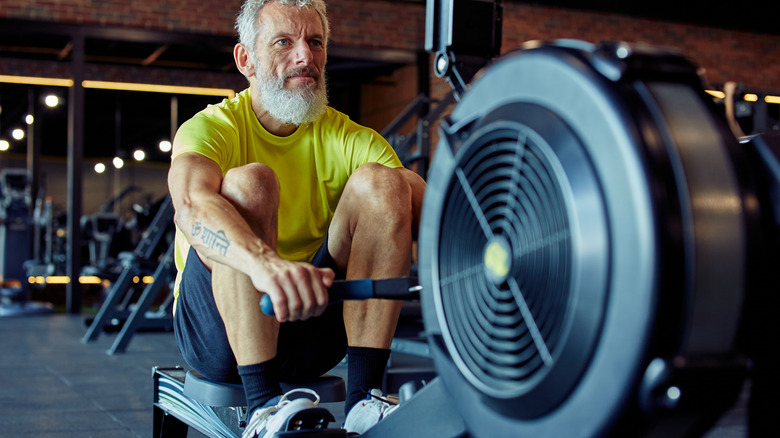Which Muscles Are You Working When Rowing?
Indoor rowing machines are a popular type of equipment you can find at almost any gym. It mimics the motion of rowing outdoors, as you pull the bar toward you and use your legs to push away propelling you forward to smoothly glide across the water. While this exercise is a great cardio workout to get those muscles burning, you may find yourself asking what muscle groups rowing actually works.
"Rowing activates nine muscle groups and utilizes 85% of the body's musculature, which is why it is such an efficient workout," Hollis Tuttle, a CITYROW Go Lead Instructor, tells Men's Health. This is because as you're rowing, you go through a series called the stroke, which is comprised of four different parts: the catch, the drive, the finish, and the recovery.
After proper setup (the catch), certified personal trainer Caley Crawford points out that muscle recruitment works in the following order — "legs, core, arms; arms, core, legs" (via Bustle). During the drive, quads, calves, and hamstrings are activated as you push against the footholds. At the finish, your core should be tight and activated, legs straight, and your arm muscles will start to fire (per Men's Health). Pulling the bar to your sternum will then work your biceps and deltoids, points out Bustle.
Does rowing also burn belly fat?
Rowing may work the core muscles when the stroke is done properly. Crawford points out that in order to activate the core muscles during the finish you'll want to lean back and tighten your core (via Bustle). Think: 11 o'clock is the position you want your torso to reach after the drive, explains Tuttle to Men's Health. This is the position where you may receive many of the strength training benefits for the core.
But when it comes to getting rid of stubborn belly fat, rowing isn't a magical pill. In fact, the idea that any exercise is capable of fat spot reduction is a common myth, points out Livestrong. In order to target belly fat, you'll want to eat the rainbow, enjoy a nutrient-rich diet, take in fewer calories than you burn, and follow a fitness program consisting of strength training and aerobic exercise (per Healthline).
This full-body exercise will help you burn fat all over your body, which includes your stomach. For beginners, Livestrong suggests rowing for 10 to 15 minutes until you feel comfortable, then gradually increase the speed and time.


